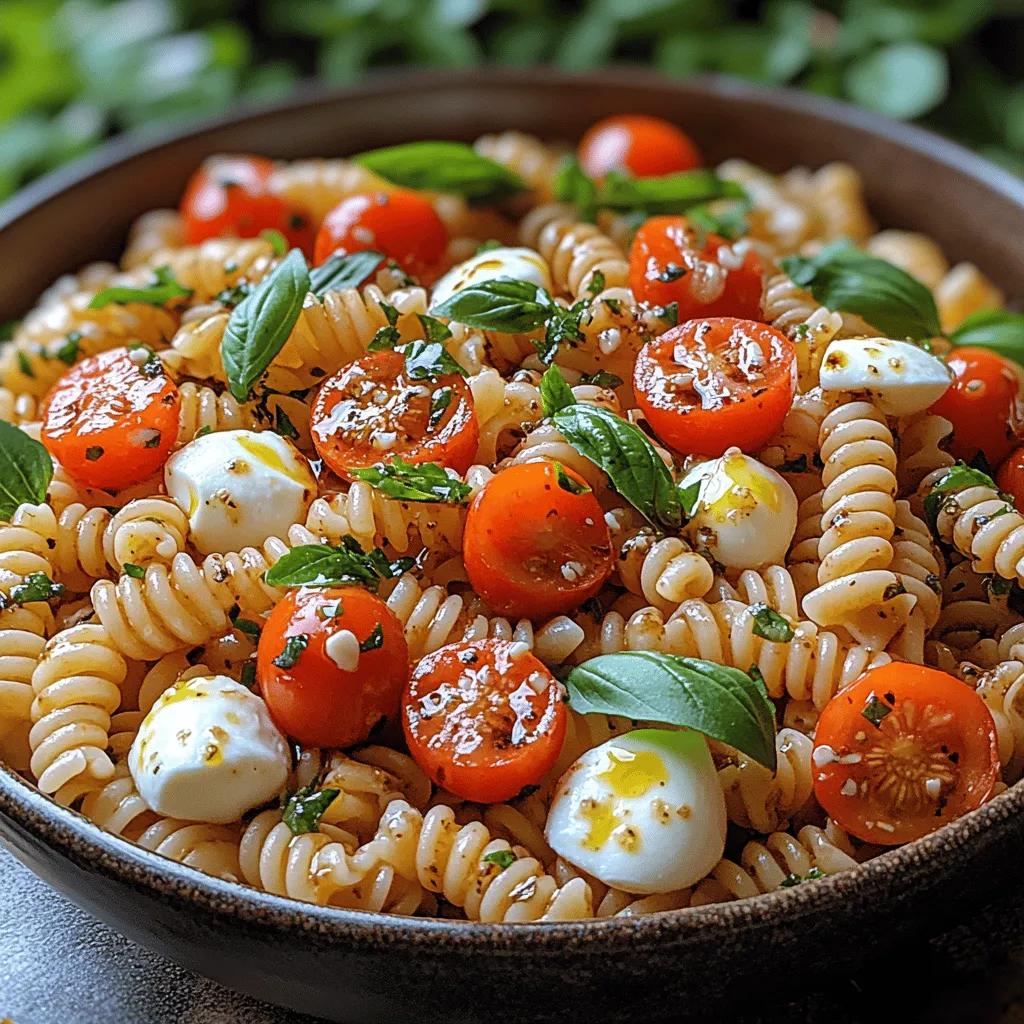Introduction
Risotto is a quintessential Italian dish that has captured the hearts and palates of food lovers around the world. Originating from Northern Italy, this creamy rice dish is known for its rich texture and versatility, making it a staple in both home kitchens and fine dining establishments. The magic of risotto lies in its ability to adapt to various flavors and ingredients, but at its core, it is the creamy, comforting nature of risotto that makes it a perfect dish for any occasion. Whether you are hosting a dinner party, celebrating a special milestone, or simply craving a warm, satisfying meal, creamy mushroom risotto is sure to impress.
Using fresh, high-quality ingredients is crucial in achieving the rich flavor and creamy consistency that risotto is renowned for. The combination of Arborio rice, fragrant mushrooms, and a well-prepared broth creates a symphony of flavors that delights the senses. In this guide, we will take you through the process of making the ultimate creamy mushroom risotto from scratch, allowing you to elevate your culinary skills and bring a taste of Italy to your dining table.
Understanding Risotto
To truly appreciate risotto, it’s essential to understand what it is and what sets it apart from other rice dishes. Risotto is a method of cooking rice that involves slowly adding liquid to the rice while stirring continuously. This technique helps to release the starch from the rice, resulting in a creamy, velvety texture that is characteristic of a well-made risotto. Unlike other rice dishes that may be boiled or steamed, risotto requires patience and attention, making it a labor of love.
At the heart of any great risotto is Arborio rice, a short-grain rice that hails from the Po Valley in Italy. Arborio rice is known for its high starch content, which is essential for achieving the creamy consistency that defines risotto. When cooked, the rice absorbs the liquid and swells, creating a tender yet slightly chewy texture that is incredibly satisfying. It is important to note that not all rice varieties are suitable for risotto; using Arborio or other risotto-specific rices, such as Carnaroli or Vialone Nano, will yield the best results.
The key cooking techniques that differentiate risotto from other rice dishes include toasting the rice before adding the broth, gradually incorporating the liquid, and stirring continuously. Toasting the rice enhances its nutty flavor and helps to seal in the starch, while the gradual addition of broth allows for a slow and steady absorption of liquid, resulting in the desired creaminess. This method also allows for greater control over the cooking process, ensuring that the rice is cooked to perfection.
Ingredients for the Perfect Creamy Mushroom Risotto
Creating a delicious creamy mushroom risotto begins with selecting the right ingredients. Each component plays a vital role in building flavor and texture, so it’s essential to use high-quality, fresh ingredients. Below is a detailed list of the essential ingredients you will need to make the perfect creamy mushroom risotto:
– Arborio Rice: The star ingredient of risotto, Arborio rice is essential for achieving that signature creamy texture. Its high starch content makes it ideal for absorbing flavors while remaining al dente.
– Fresh Mushrooms: The type of mushrooms you choose can significantly impact the flavor of your risotto. For a classic creamy mushroom risotto, consider using a mix of cremini and shiitake mushrooms, which provide a deep, earthy flavor. Alternatively, you can experiment with other varieties such as porcini, button, or wild mushrooms for added complexity.
– Broth: The choice of broth is crucial for enhancing the overall flavor of the dish. You can use chicken, vegetable, or mushroom broth, depending on your dietary preferences. Warm the broth before adding it to the rice to maintain a consistent cooking temperature.
– Onion and Garlic: These aromatic ingredients form the flavor base of the risotto. Finely chopping them will release their natural flavors and aromas, creating a fragrant foundation for the dish.
– White Wine: Adding white wine to the risotto introduces acidity, balancing the richness of the dish. Choose a dry white wine, such as Pinot Grigio or Sauvignon Blanc, to complement the flavors of the mushrooms.
– Parmesan Cheese: For creaminess and richness, grated Parmesan cheese is essential. It not only enhances the flavor of the risotto but also contributes to its velvety texture.
– Fresh Herbs: Garnishing your risotto with fresh herbs, such as parsley or thyme, adds a burst of freshness and color. They complement the earthy flavors of the mushrooms beautifully.
– Optional Ingredients: To elevate your risotto further, consider incorporating optional ingredients such as truffle oil for a luxurious touch, or peas for a pop of color and sweetness.
Preparing Your Ingredients
Proper preparation of your ingredients is crucial to ensuring that your creamy mushroom risotto turns out perfectly. Begin by cleaning and slicing your mushrooms; this step is essential to preserve their flavor and texture.
How to Properly Clean and Slice Mushrooms
1. Cleaning: Gently wipe each mushroom with a damp paper towel to remove any dirt or debris. Avoid rinsing them under water as they can absorb moisture, which may affect their texture during cooking.
2. Slicing: Depending on the size of the mushrooms, you can slice them into even pieces. For smaller mushrooms, such as cremini, cutting them in half or quarters works well. For larger varieties, like shiitake or portobello, slice them into thin strips to allow for even cooking.
Chopping Onions and Garlic for Maximum Flavor Release
Next, finely chop your onion and garlic. The key to maximizing their flavor release is to chop them into small, uniform pieces. This allows them to cook evenly and infuse the risotto with their aromatic qualities.
1. Onions: Peel your onion and cut it in half. Make several vertical cuts before slicing horizontally to create small, diced pieces.
2. Garlic: Take a few cloves of garlic and crush them slightly with the flat side of a knife to release their natural oils. Then, finely chop the garlic using a rocking motion with your knife.
The Importance of Warming Your Broth Before Adding It to the Risotto
Before you begin cooking your risotto, it’s important to warm your broth. Keeping the broth at a consistent temperature is essential to prevent the cooking process from stalling. When cold broth is added to the risotto, it can shock the rice and cause it to cook unevenly.
To warm your broth, pour it into a saucepan and heat it over low heat until it reaches a gentle simmer. This will ensure that the broth is ready to be incorporated into your risotto at the right time.
Cooking the Risotto
Now that you have prepared your ingredients, it’s time to dive into the cooking process. Making creamy mushroom risotto is a rewarding experience that requires attention to detail and a bit of patience. Follow this step-by-step guide to ensure a successful outcome.
Step-by-Step Guide to Sautéing the Base
1. Heat the Pan: Begin by heating a large, heavy-bottomed skillet or saucepan over medium heat. A heavy pan helps distribute heat evenly, preventing hot spots and ensuring consistent cooking.
2. Add Oil and Butter: Once the pan is hot, add a tablespoon of olive oil and a tablespoon of unsalted butter. The combination of oil and butter adds flavor and prevents the butter from burning.
3. Sauté Onions and Garlic: Add the chopped onions to the pan and sauté them until they become translucent, about 3-4 minutes. Next, add the minced garlic and continue to sauté for an additional minute until fragrant. Be careful not to let the garlic brown, as it can become bitter.
The Process of Toasting the Arborio Rice
Once your aromatic base is ready, it’s time to add the Arborio rice.
1. Add the Rice: Pour in the Arborio rice, stirring to coat it in the oil and butter mixture. Toast the rice for about 2-3 minutes, allowing it to absorb the flavors of the onions and garlic. This step enhances the nuttiness of the rice and prepares it for the slow cooking process.
How to Incorporate Broth Gradually for Optimal Creaminess
The final step in cooking your risotto involves the gradual addition of warm broth. This is where the creamy magic happens.
1. Add White Wine: Pour in the dry white wine, stirring continuously until it’s mostly absorbed by the rice. This adds a layer of acidity that balances the richness of the dish.
2. Incorporate Broth: Start adding your warmed broth one ladleful at a time. Stir the rice gently and continuously, allowing it to absorb the liquid before adding more. This process typically takes about 18-20 minutes. You’ll know the risotto is done when the rice is al dente, and the texture is creamy and luscious.
3. Final Touches: Once the rice is cooked to your desired doneness, remove the pan from heat. Stir in grated Parmesan cheese until melted and combined, adding an extra layer of creaminess.
Your creamy mushroom risotto is now ready to be plated and enjoyed! With these steps, you are well on your way to mastering this classic Italian dish, perfect for impressing your family and friends or simply indulging in a comforting meal at home.

Techniques for Stirring and Timing to Achieve the Perfect Texture
The secret to achieving the perfect creamy mushroom risotto lies in the art of stirring and timing. Stirring gently but consistently is essential for releasing the starches from the Arborio rice, which is what gives risotto its signature creamy texture. Use a wooden spoon to create a figure-eight motion, ensuring that all grains are evenly coated with liquid and heat. This technique not only helps in achieving the right consistency but also prevents the rice from sticking to the bottom of the pan.
Timing is equally crucial. You should stir the rice for about 20 seconds after each addition of broth. This allows the rice to absorb the liquid gradually, ensuring each grain cooks evenly. The ideal cooking time for Arborio rice is typically around 18-20 minutes, but keep an eye on the texture; it should be al dente, tender yet firm to the bite.
Adding the Mushrooms
Adding mushrooms to your risotto is a delightful way to enhance both flavor and texture. For best results, choose fresh mushrooms like cremini, shiitake, or portobello. The timing of when you add the mushrooms is crucial.
1. When to Add: Introduce the mushrooms to the pan after the rice has been sautéed and before you begin adding the broth. This will give the mushrooms enough time to caramelize and release their flavors into the risotto. Sauté for about 2-3 minutes until they are golden brown and tender.
2. Sautéing Tips: To enhance the flavor of the mushrooms, make sure not to overcrowd the pan. If necessary, sauté them in batches. Use a bit of olive oil or butter to coat the bottom of the pan, and season the mushrooms with a pinch of salt to draw out their moisture and intensify their flavor. Stir occasionally to ensure even cooking.
3. Balancing Mushroom Flavors: Once the mushrooms are tender, incorporate them into the risotto along with the first addition of broth. This allows their earthy flavors to meld with the creamy texture of the risotto. If you want to elevate the dish even further, consider adding a splash of white wine after the mushrooms have browned, letting it evaporate before adding the broth.
Finishing Touches
The finishing touches are what elevate your creamy mushroom risotto from good to exceptional.
1. Incorporating Parmesan: Once the rice has reached an al dente texture, remove the risotto from the heat and stir in freshly grated Parmesan cheese. The cheese adds a rich, creamy flavor and helps bind the dish together. For a more decadent finish, you can also add a tablespoon of unsalted butter at this stage.
2. Herbs and Seasoning: Enhance the flavor profile by adding fresh herbs such as parsley, thyme, or chives. They not only add a burst of freshness but also complement the earthiness of the mushrooms. Season your risotto with freshly cracked black pepper and taste before serving; you may want to add a bit more salt or cheese, depending on your preference.
3. Letting It Rest: Allow the risotto to rest for about 2-3 minutes before serving. This resting period allows the flavors to meld and the risotto to thicken slightly, making for a more cohesive dish.
Serving Suggestions
The way you serve your creamy mushroom risotto can make a significant difference in the overall dining experience.
1. Ideal Accompaniments: Consider pairing your risotto with a simple arugula salad dressed with lemon vinaigrette to cut through the creaminess. Grilled vegetables or a side of crusty bread can also complement the richness of the risotto.
2. Presentation Tips: For a restaurant-quality presentation, serve the risotto in shallow bowls. Use a spoon to create a small well in the center, allowing extra Parmesan and herbs to pile in, and drizzle with a little extra virgin olive oil for a touch of gloss. A sprinkle of microgreens or edible flowers can also add a pop of color.
3. Pairing Wine: Elevate your dining experience by pairing your creamy mushroom risotto with a glass of white wine. A crisp Sauvignon Blanc or a buttery Chardonnay works beautifully, as the acidity cuts through the cream, enhancing the dish’s flavors.
Variations on Creamy Mushroom Risotto
One of the best aspects of creamy mushroom risotto is its versatility. Here are some variations to consider:
1. Different Types of Mushrooms: Experiment with various mushrooms. Shiitake mushrooms bring a robust flavor, while portobello adds a meaty texture. For a delicate touch, consider using chanterelles or morels, which can elevate the dish with their unique tastes.
2. Vegetarian or Vegan Adaptations: For a vegetarian version, simply use vegetable broth instead of chicken broth and omit the cheese or replace it with a vegan alternative. Nutritional yeast can also provide a cheesy flavor without dairy.
3. Seasonal Variations: Incorporate seasonal vegetables for a fresh twist—think asparagus in the spring or roasted butternut squash in the fall. Adding peas or spinach can introduce vibrant colors and additional nutrients.
Common Mistakes to Avoid
While making creamy mushroom risotto, there are common pitfalls to watch out for:
1. Overcooking the Rice: Keep a close eye on the texture of the rice. Overcooked risotto can become mushy, losing its signature al dente bite. Remember, risotto should be creamy but the rice should still have a slight firmness.
2. Adding Broth Too Quickly: Resist the temptation to pour in all the broth at once. Adding it gradually allows the rice to absorb the liquid slowly, which is crucial for achieving creaminess.
3. Skipping the Resting Period: Allowing the risotto to rest after cooking is essential for the flavors to develop. Skipping this step may result in a dish that lacks the depth of flavor and creaminess you desire.
Storing and Reheating Risotto
If you find yourself with leftovers, proper storage and reheating are key to maintaining the dish’s deliciousness.
1. Proper Storage Techniques: Store any leftover risotto in an airtight container in the refrigerator. It’s best consumed within 2-3 days. When storing, consider separating any additional toppings or garnishes to keep them fresh.
2. Best Practices for Reheating: When reheating, add a splash of broth or water to the risotto to restore its creamy texture. Heat gently in a saucepan over low heat, stirring frequently until warmed through. Avoid using high heat, which can cause the rice to further cook and become mushy.
Conclusion
Homemade creamy mushroom risotto is a culinary delight that brings warmth and comfort to any dining occasion. Its versatility makes it suitable for both casual meals and elegant gatherings, while the rich flavors can cater to a variety of dietary preferences.
As you experiment with flavors and ingredients, you’ll find that risotto is not just a dish; it’s an opportunity to express creativity in the kitchen. So, gather your ingredients, put on your chef’s hat, and enjoy the process of making this classic Italian recipe. Whether you stick to the traditional method or venture into exciting variations, the joy of creating a delicious, creamy mushroom risotto will undoubtedly leave a lasting impression on your taste buds and those of your guests.


